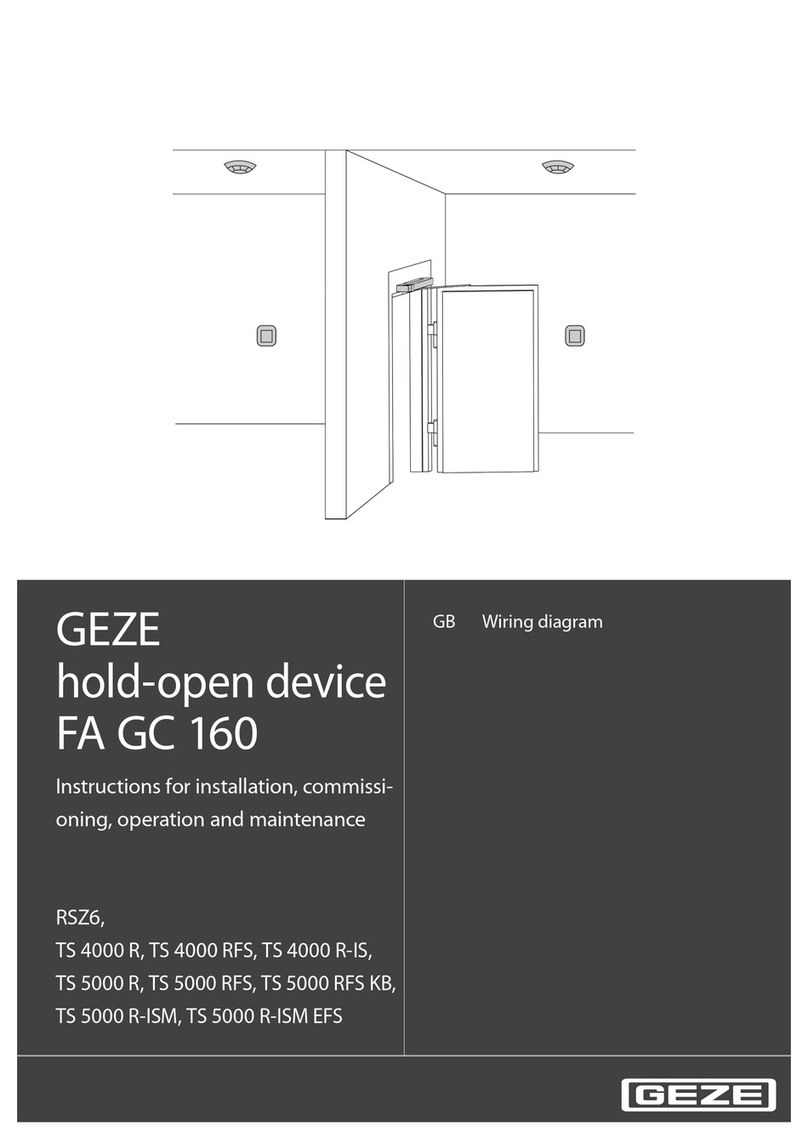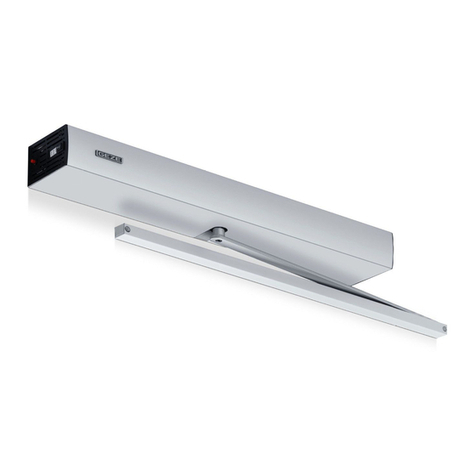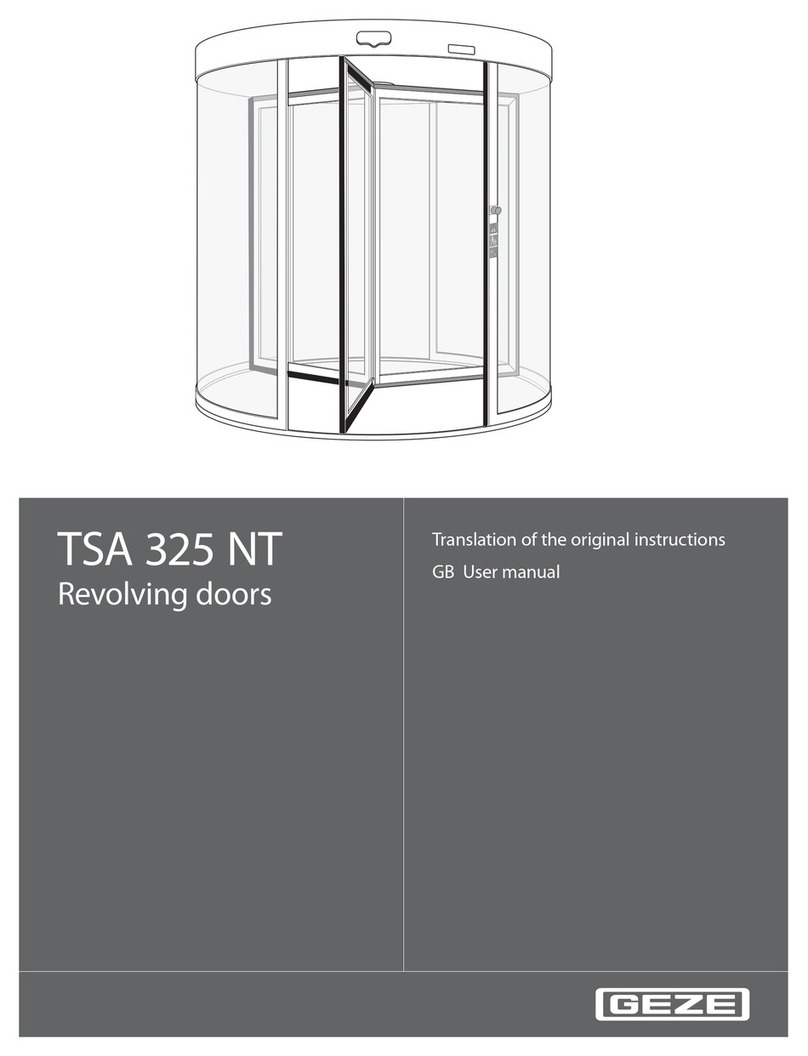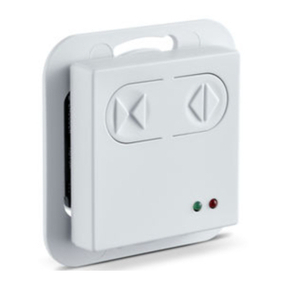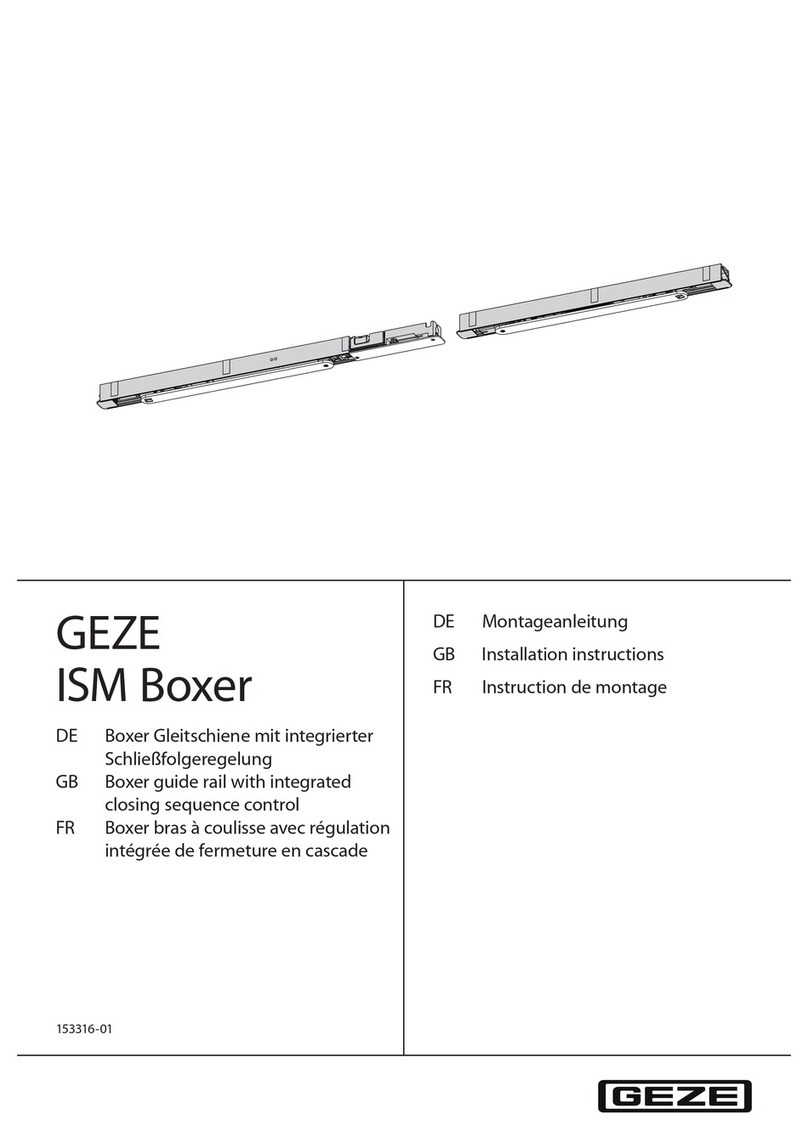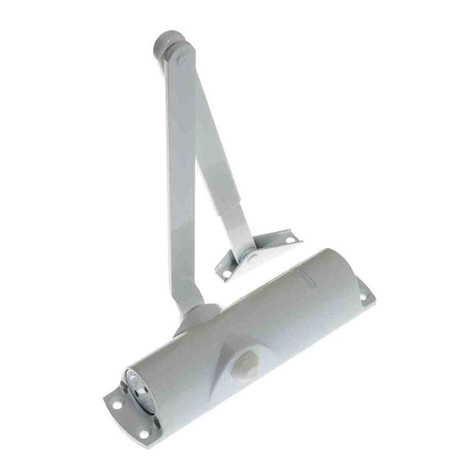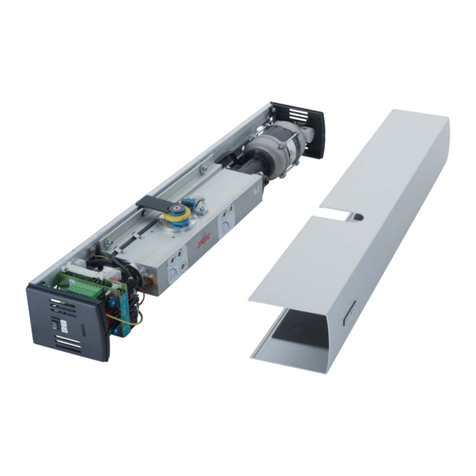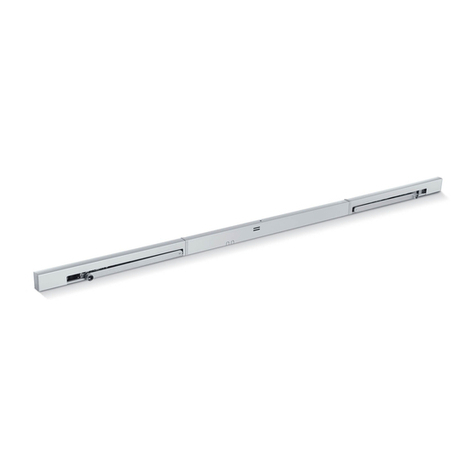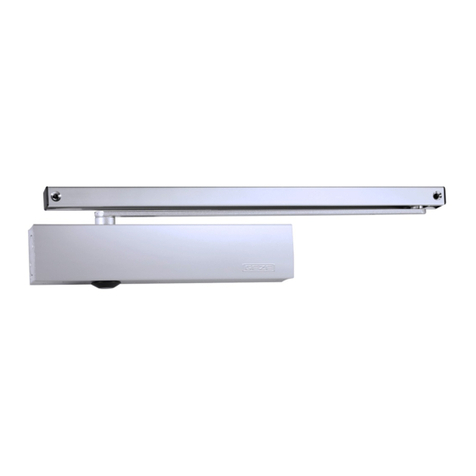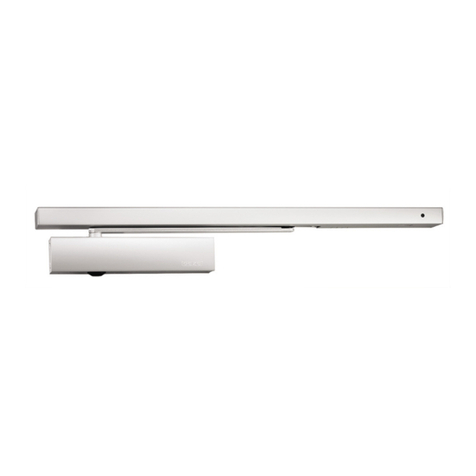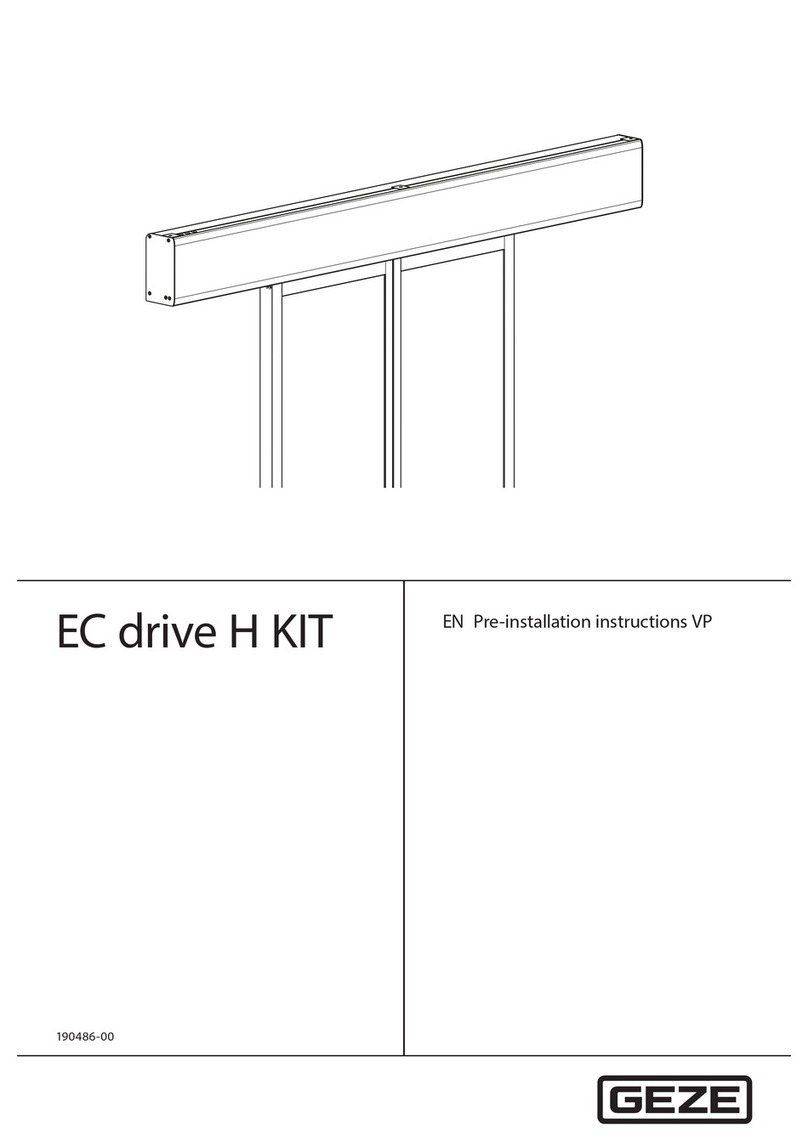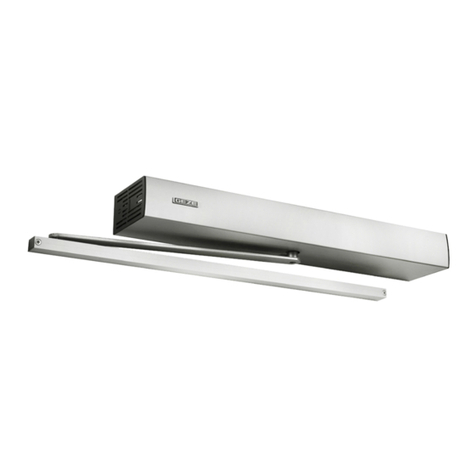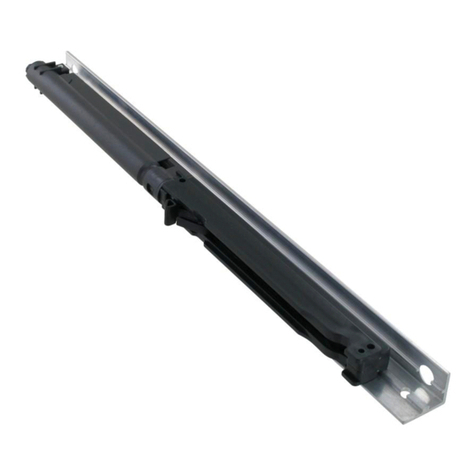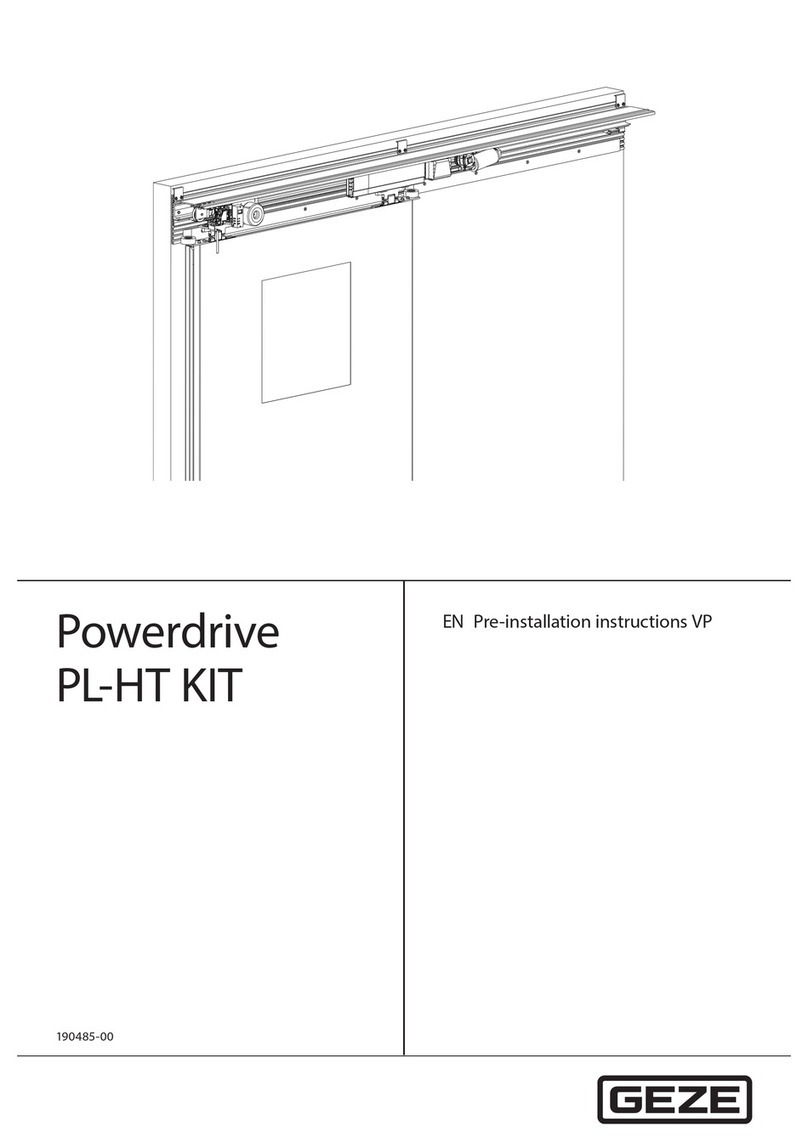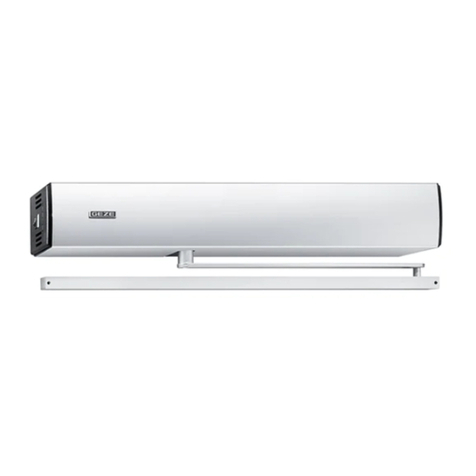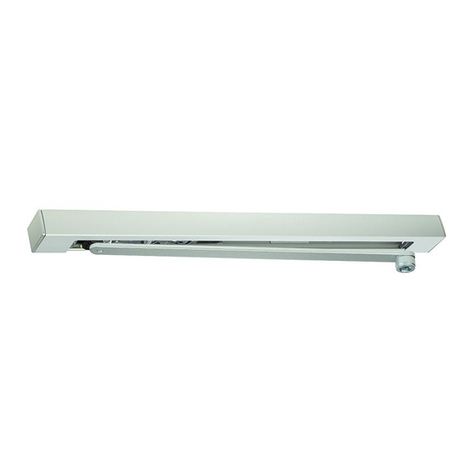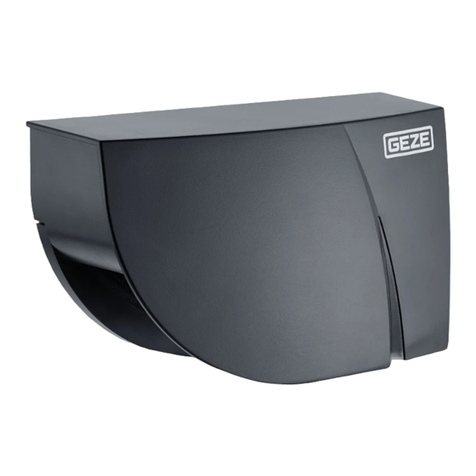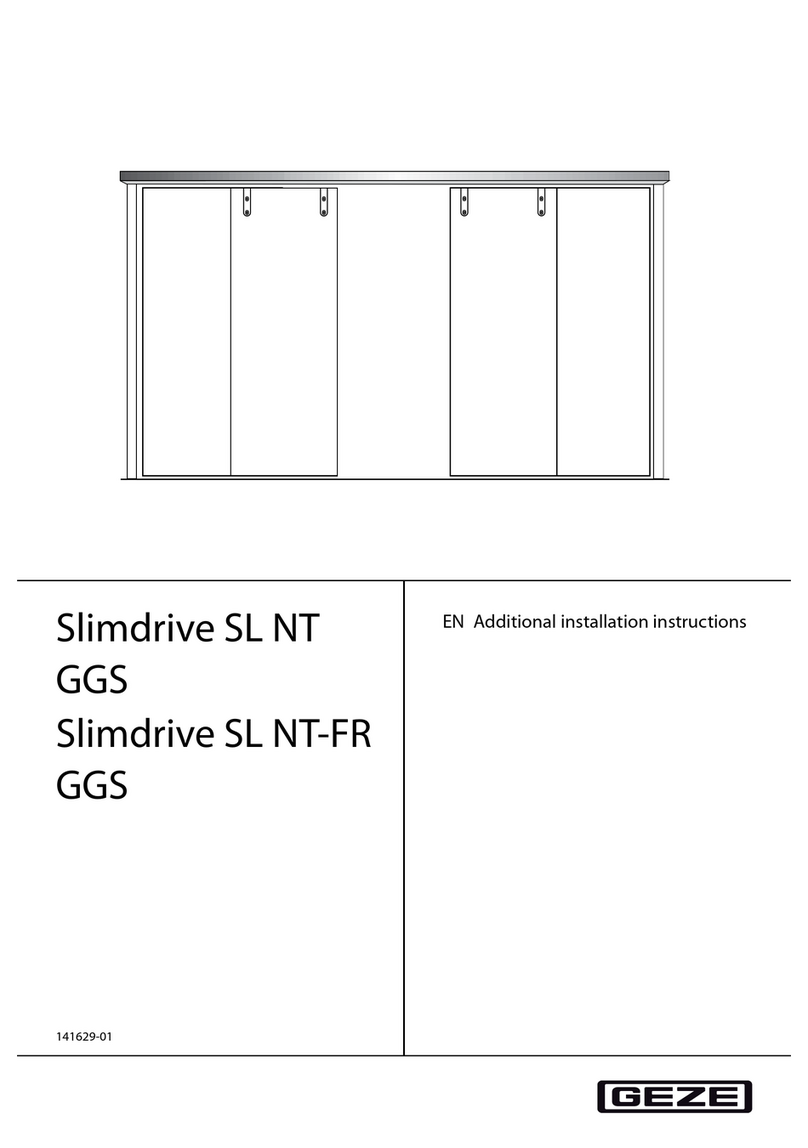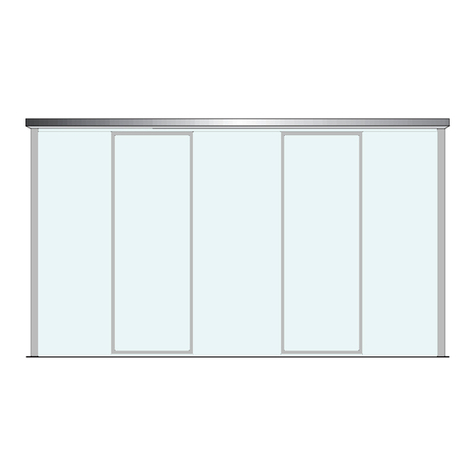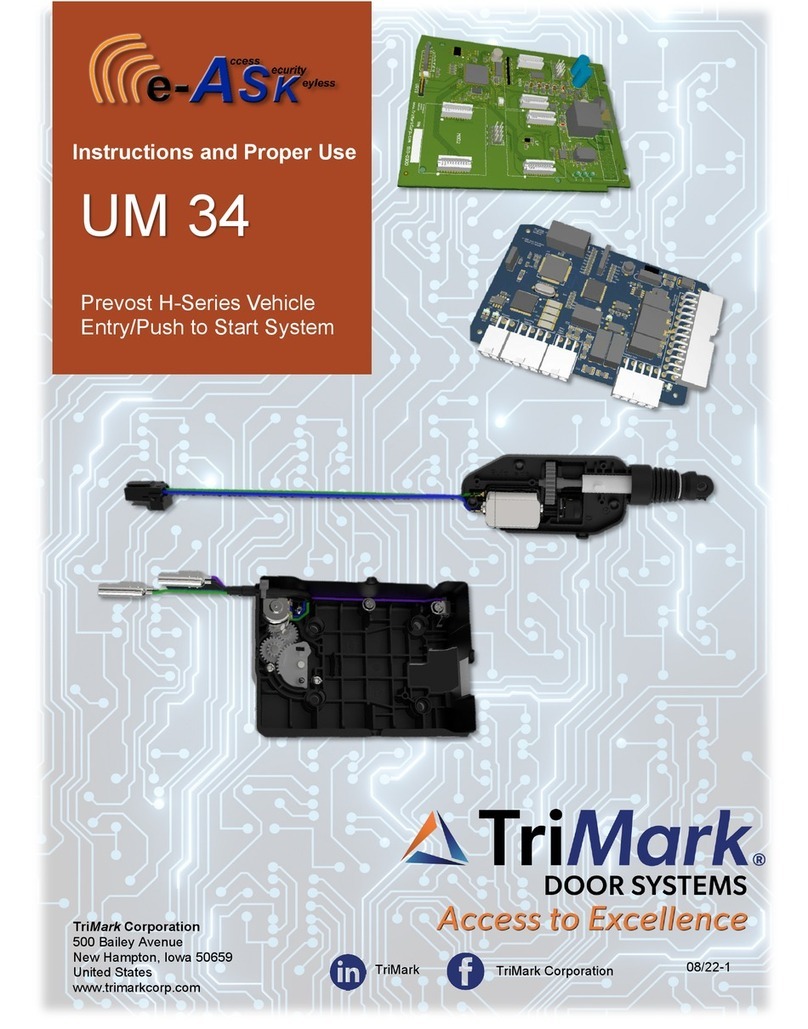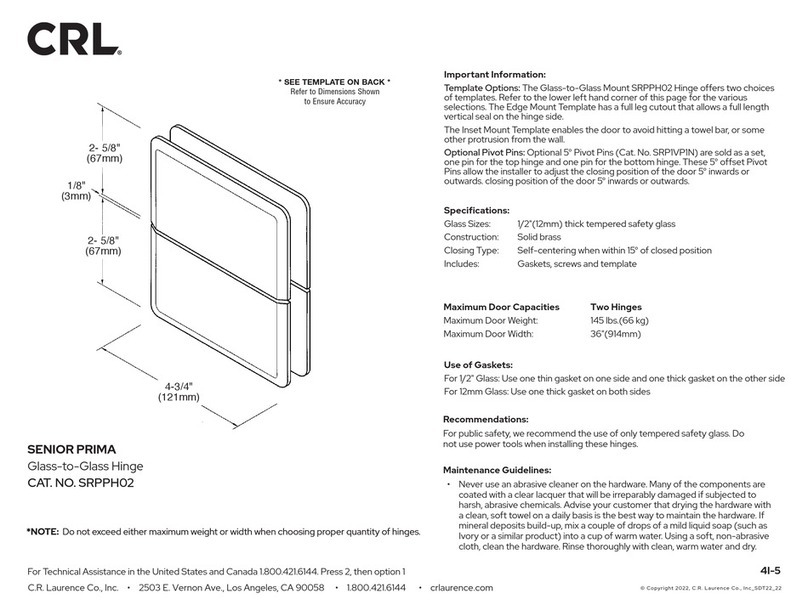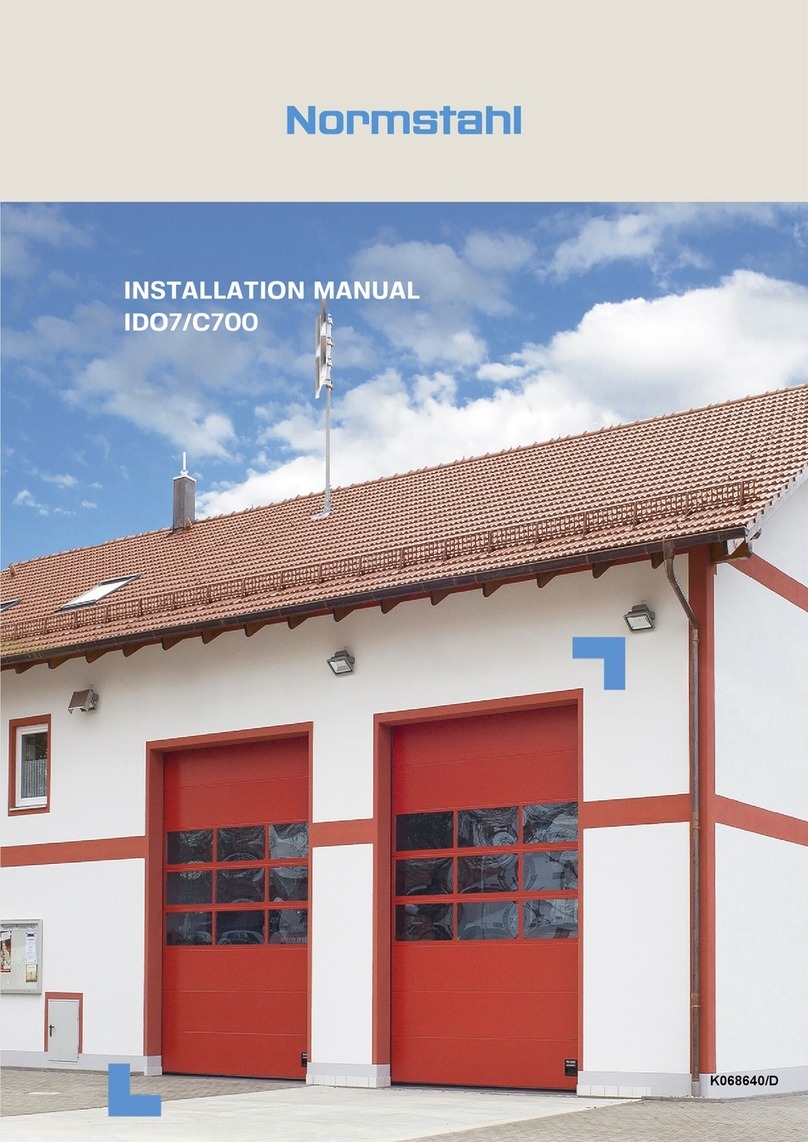
TSA 160 NT
4
Introduction
1.5 Terms
Term Explanation
Hinge side The side of the door where the hinges from which the door leaf is suspended are located.
Usually that side of the door located in the opening direction.
Opposite hinge side The side of the door facing the hinge side. Usually that side of the door located in the direc-
tion of closing movement.
Active leaf The active leaf of a double-leaf door. When the door is used, the active leaf must open as
the rst door leaf and close as the last door leaf.
Passive leaf
The secondary leaf of a double-leaf door. When the door is used, the passive leaf may not open
until the active leaf has left the closing position and must close again as the rst door leaf.
Activation device - inside (KI)
Push button, switch or movement detector for activating the door drive.
The activation device is located within the room enclosed by the door.
Activation function in the modes of operation AUTOMATIC and EXIT ONLY 1).
The activation device does not have any function in the NIGHT/OFF mode of operation.
Activation device - out-
side (KA)
Push button, switch or movement detector for activating the door drive.
The activation device is located outside the room enclosed by the door.
Activation function in the AUTOMATIC mode of operation. The activation device does not
have any function in the EXIT ONLY 1) and NIGHT/OFF modes of operation.
Activation device
authorised (KB)
Access control function (for example key switch or card reader) used by authorised persons
to activate the door drive.
The control function is active in the AUTOMATIC, EXIT ONLY1) and NIGHT/OFF modes of operation.
Activation device with
current impulse function
Push button for opening and closing the door. Control function only in the AUTOMATIC
and EXIT ONLY modes of operation1). The door is opened automatically when the button is
rst pressed and closed again automatically when the button is pressed the second time.
The function can be activated during commissioning by parameter setting.
Push&Go When the door is pressed manually out of the closing position during an activated closing
position inhibition, the door opens automatically as soon as a specic adjustable opening
angle is exceeded.
Opening safety sensor (SIO)
Presence detector (e.g. active infrared light switch) for protecting the swinging range of the
door in the opening direction. As a rule the sensor is located on the hinge side of the door
on the door leaf.
Closing safety sensor (SIS) Presence detector (for example active infrared light switch) for protecting the swinging
range of the door in the closing direction. As a rule the sensor is located on the opposite
hinge side of the door leaf.
Stop Self-locking switch with which immediate stopping of the door drive can be triggered in
case of danger. The door drive remains in its current position until the user unlocks the stop
switch again, thus terminating the stop situation.
Closing sequence control Electrical closing sequence control
In normal operation of double-leaf door drives, the closing sequence of the door leaves is
controlled by the control units of the door drives, with the passive leaf being closed rst.
The active leaf remains in the open position until the hold-open time of the passive leaf has
expired. Only then does the active leaf begin to close.
Integrated closing sequence control (-IS):
In the event of a power failure for 2-leaf door systems, the closing sequence is controlled
mechanically with TSA 160 NT-F-IS. The door leaves are closed by means of the power stor-
age of the drives, with the active leaf being kept open by the integrated mechanical closing
sequence control unit at approximately 30° opening angle before the closing position is
reached. When the passive leaf has reached the closing position, it releases the active leaf
by means of the mechanical elements of the integrated closing sequence control so that it
can also close completely..
1) The EXIT ONLY mode of operation can only be selected with the optional mechanical programme switch.

